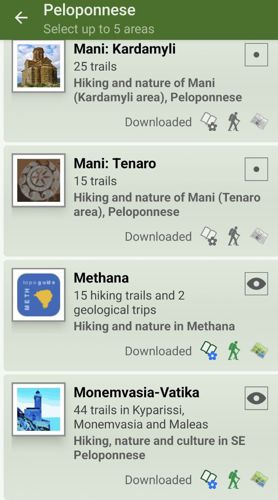The vegetation of Methana
Nature of Methana peninsula
The vegetation of Methana peninsula
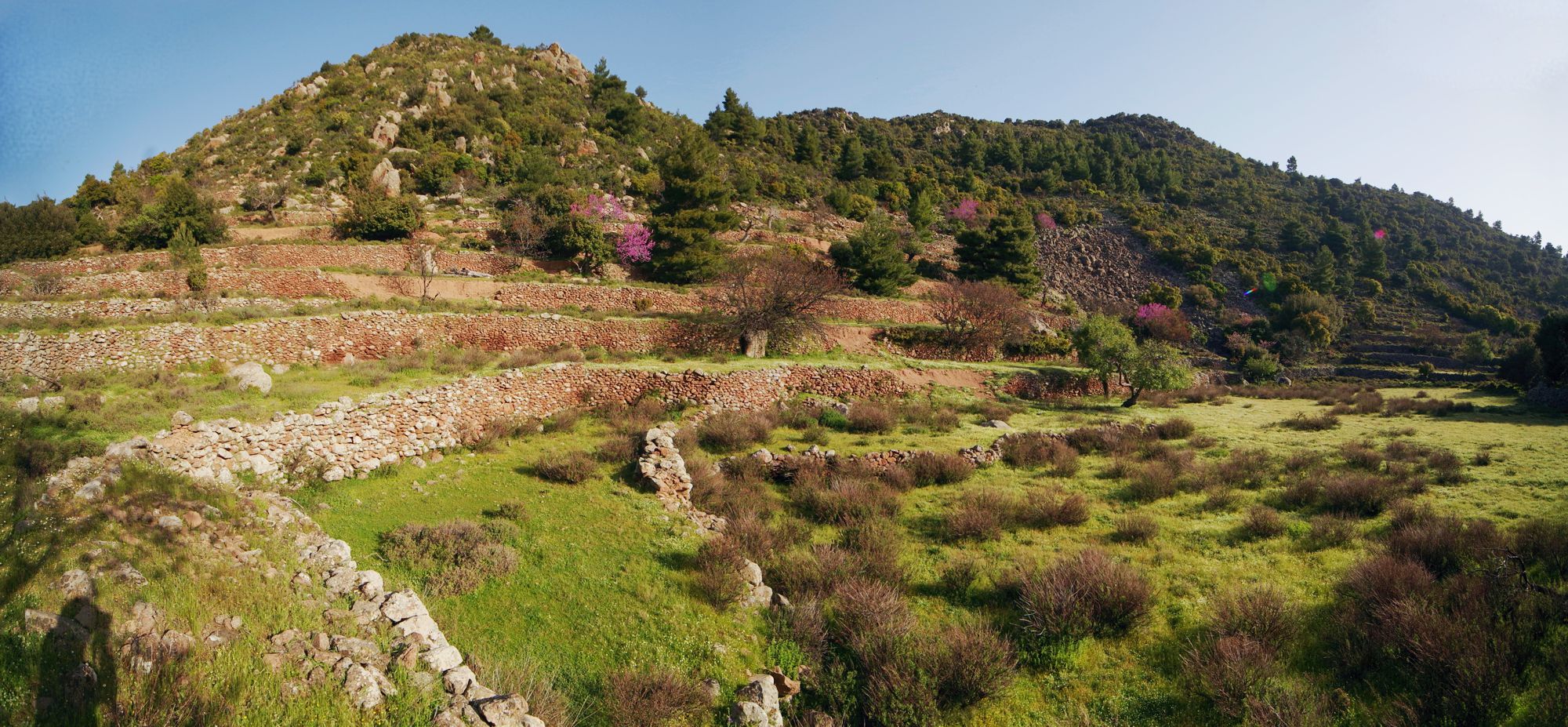
A mosaic of shrubland, pine stands and crops
Click to enlarge
a mosaic of shrubland, pine stands and crops
The vegetation of Methana peninsula differs strongly on the south-north axis, due to the extreme variation of the geological substrate (limestone-volcanic rocks), while there is no significant difference in the east-west direction.
In the south there are few woods, large areas of active or abandoned farmland and large areas of phryganic forms of vegetation, while in the north there are large and some places mature pine forests, dense maquis vegetation and large natural meadows.
The phrygana
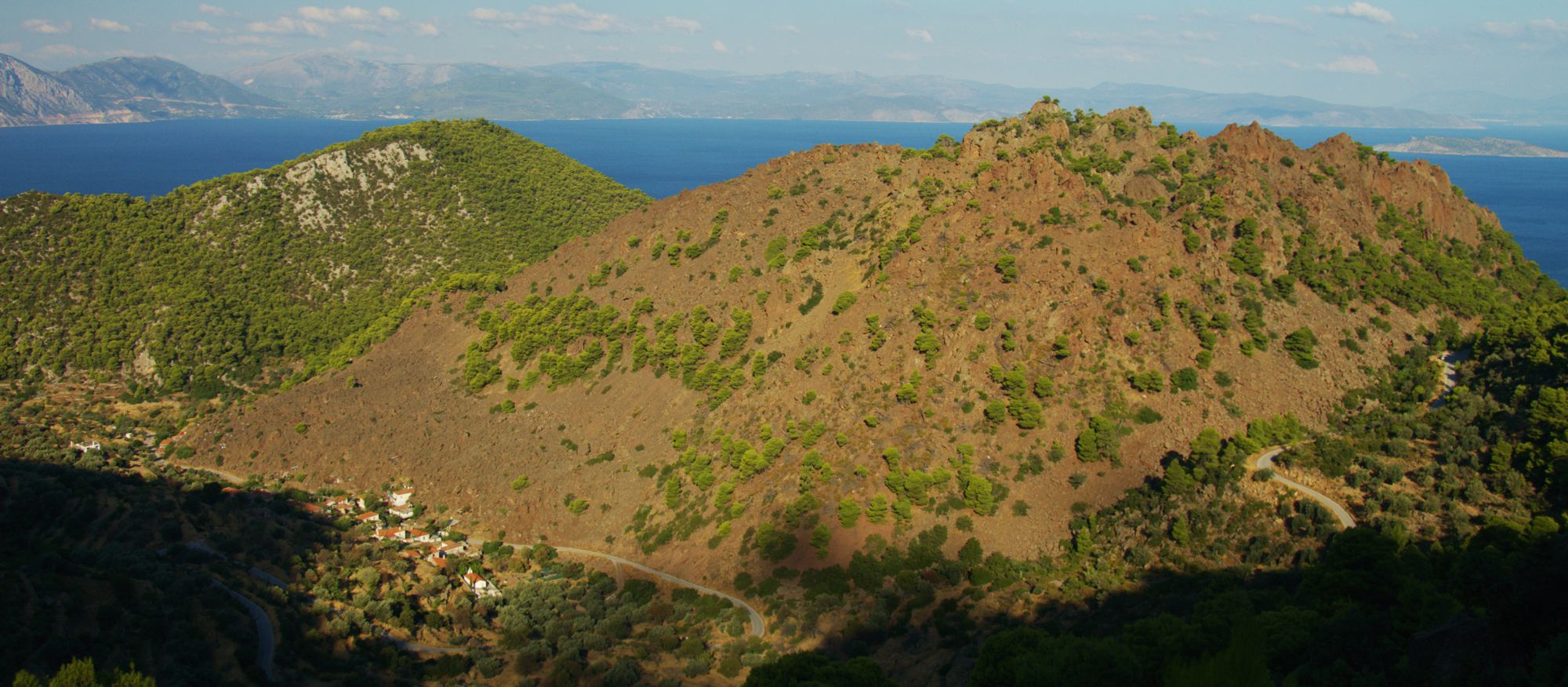
Kameni volcano landscape is covered by low phrygana and scattered pines
Click to enlarge
Kameni volcano landscape is covered by low phrygana and scattered pines
Phryganic vegetation covers extended areas on the limestone substrate of the southern and central part of the peninsula, with some of the typical species in the are being the thyme (Coridothymus capitatus), the thorny burnet (Sarcopoterium spinosum), the rock-roses (Cistus sp.), the Greek spiny spurge (Euphorbia acanthothamnos), the thyme-Leaved savory (Satureja thymbra), the heaths (Erica manipuliflora and Erica arborea) and others.
Extended areas are covered by phrygana, dominated by rock-rose (Cistus sp.).
The shrubland
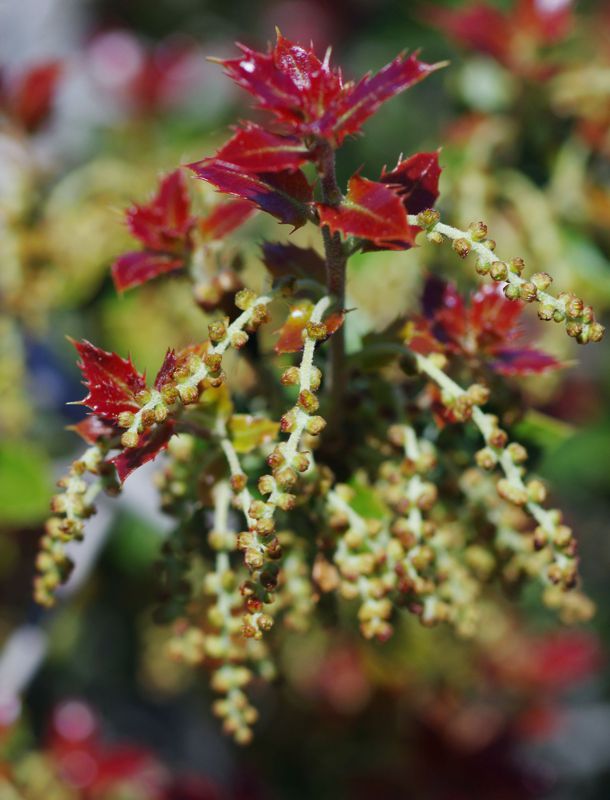
Kermes oak (Quercus coccifera) is about to bloom
The bushy vegetation of the peninsula includes a variety of plant communities and habitat types. Shrubland with Phoenicean juniper (Juniperus phoenicea) as a predominant species occur at both the western and eastern southern sides of the peninsula, while typical sclerophyllous scrubland (maquis) appear in scattered locations in the central part of the peninsula, consisting of species such as the Kermes oak (Quercus coccifera), the Lentisk (Pistacia lentiscus), the Terebinth tree (Pistacia terebinthus), the Italian plum (Prunus cocomilia), the Smoketree (Cotinus coggygria), the Common and the Greek strawberry trees (Arbutus udendo and Arbutus andrachne) and others.
Moreover, here and there we can observe clusters with low trees, such as Wild olive trees (Olea oleaster), Almond-leaved pear trees (Pyrus amygdaliformis), Carob trees (Ceratonia siliqua) and Maples (Acer sempervirens), which have been preserved through the various intertemporal pressures (crops, grazing, fires, etc.), and recovered.
Old cropland
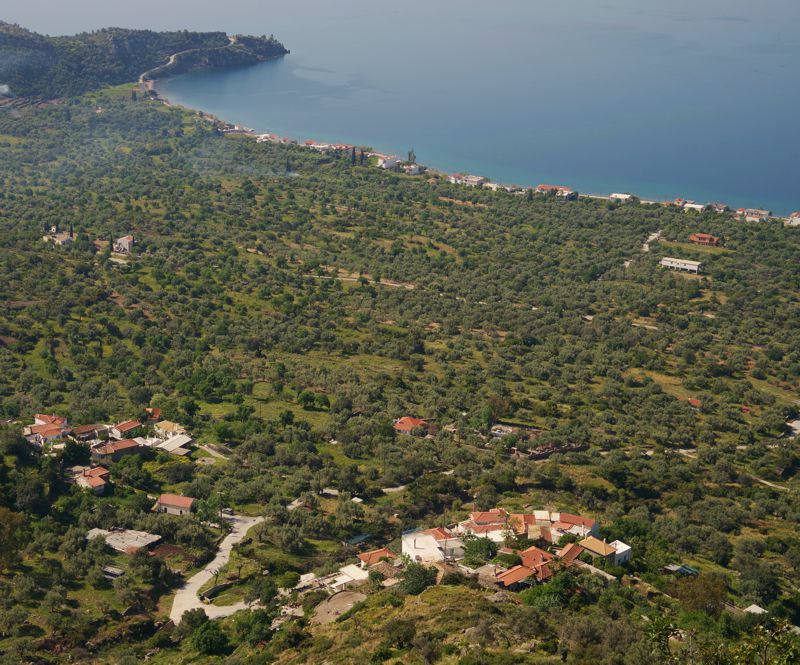
The olive grove between Megalopotami and Vathy
All the plateaus and other level terrain are hosting the remnants of old cereal crops. There are many small orchards, where the predominant cultivations are olive trees and vineyard. Other fruiting trees, such as the almond tree, were grown intensively in more sloping areas, where the terrain was shaped with the help of stone-built terraces.
These crops are very old and are known from antiquity, as evidenced by the finding of many ancient olive mills and ancient wineries. Today, the olive groves are experiencing a new bloom and the interest for the vineyard has been reborn.
Finally, around the villages one could easily find dozens of small fields, where the inhabitants cultivated - and in many cases still cultivate - vegetables, with the help of small springs or rain water collectors.
Aleppo pine forest
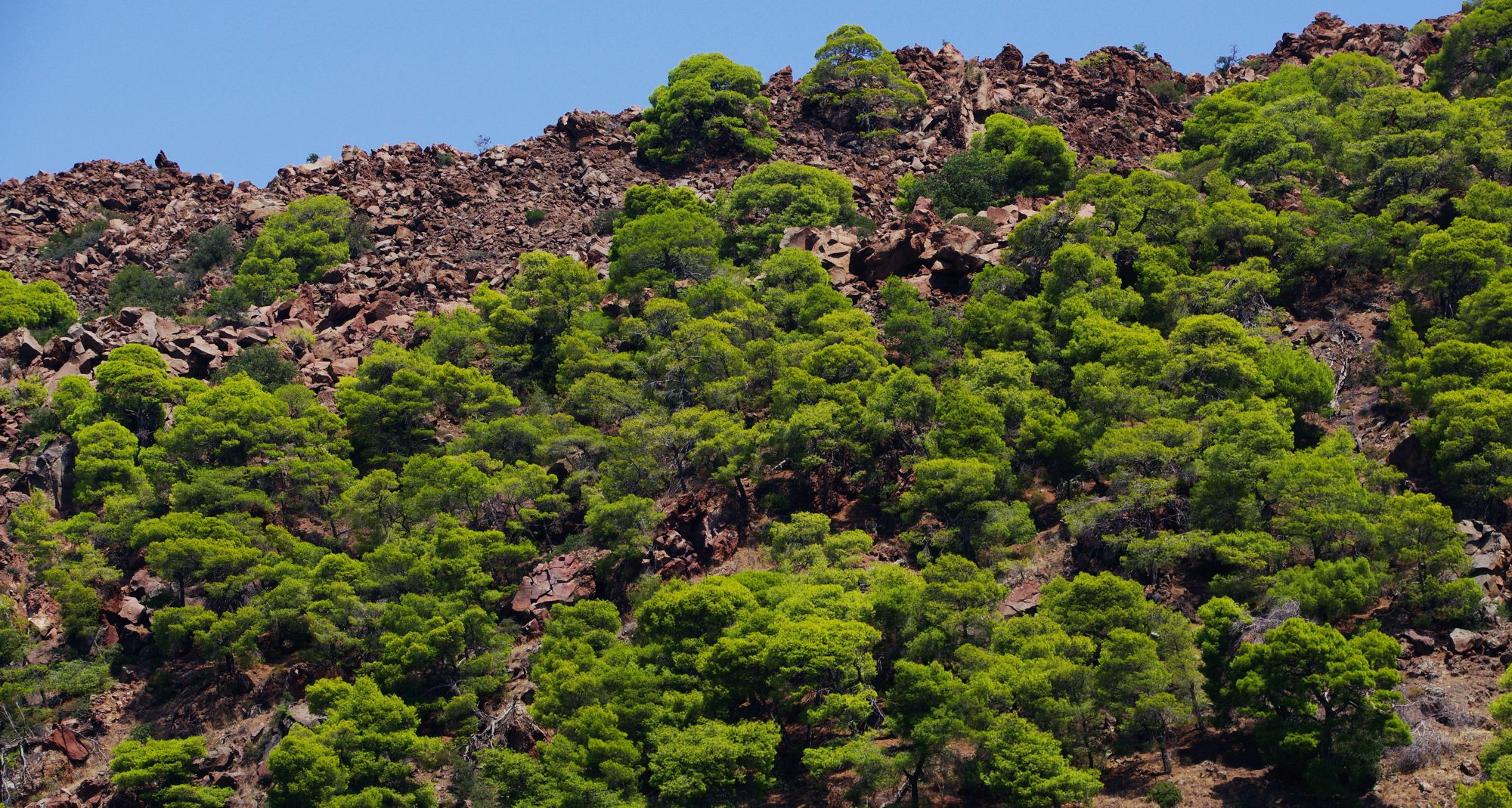
Aleppo pine colonizes even the more aride and steep volvano terrains
Click to enlarge
Aleppo pine colonizes even the more aride and steep volvano terrains
The dense forest of Aleppo pine dominates the northern part of Methana, thanks to its impressive inherent regeneration and expansion ability. It is precisely thanks to this property that the pines penetrate and mix with the other types of vegetation, but also have begun to colonize even the fields of solidified lava in the NW, covered by dry soils, extremely poor in nutrients.
Riparian vegetation
In the ravines we will find Plane trees (Platanus orientalis), Chaste trees (Vitex agnus-castus) and Oleanders (Nerium oleander).
Text and photos: T. Adamakopoulos

topoguide Greece
A GUIDE FOR METHANA PENINSULA
The guide Methana topoguide is available for Android devices along with dozens of other regions of Greece, within the general application topoguide Greece. Methana topoguide is a member of the Pelponnese group. Get Methana topoguide as an in-app purchase from the topoguide Greece available regions list.
The Methana topoguide guide is also available for iOS devices (iPhone and iPad) through the general hiker application Topoguide Greece. Get Methana topoguide as an in-app purchase via the available regions list.
It is very interesting that topoguide Greece has the ability to simultaneously display up to 15 different areas, thus allowing an overall view of the Peloponnese and the easy alternation of hundreds of hiking routes, hundreds of Points of Interest and dozens of pages of the guide with innumerable photos.
